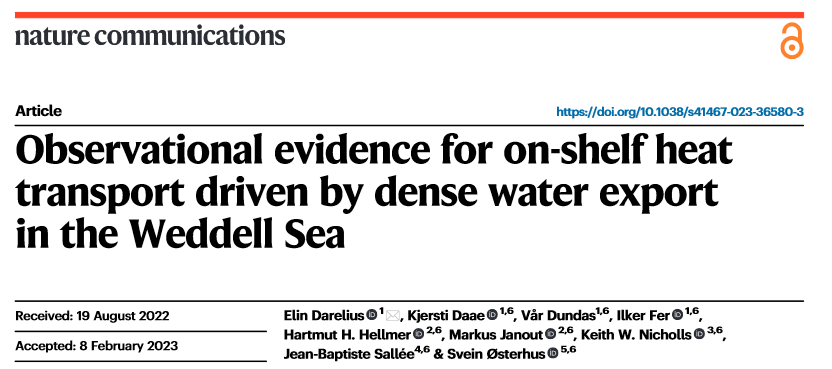While on sabbatical in France, I finally had the time to read all (or at least most of) the papers in my “looks_interesting”-folder on the desktop… one of them was “Warm Circumpolar Deep Water transport toward Antarctica driven by local dense water export in canyons” by Morrison et al (2020). The title tells it all: their model results showed that where cold, dense water flows down the slope, warm water was flowing in the opposite direction, i.e. up the slope and onto the continental shelf! About half-way through the paper, where the authors stated that they were “unaware of direct observations that can be analyzed to test our modeling results”, I stopped reading – not because the paper was not interesting, but because I was aware of such observations!
During my PhD (a decade and a half ago!) I worked with “local dense water export in canyons” and I knew very well that a ridge downstream of the Filchner Trough in the southern Weddell Sea is steering dense water down the slope – I also knew that this is a (relatively) well-sampled region of the Southern ocean… would the old (and not so old) data show the upslope flow of warm water suggested by the model?
I had just spent time downloading and organizing Southern Weddell Sea CTD-data from data bases and archives for another project, so I was set to go… and it did not took long before I sent an e-mail with figures to Jean Baptiste Sallée (whom I was visiting at LOCEAN in Paris) asking if he was in. It all fitted together so nicely – the temperature-profiles collected over the last fifty (!) years clearly showed that, above the slope, we found warm water higher up in the water column in the vicinity of the ridge than elsewhere. Water on the continental shelf in that region was warmer than the warm water intrusions further the east. While I had studied mooring data from the region for months, if not years, to learn about the flow of dense water on the slope, I had never really cared to look at the records from the instruments higher up, those that were placed above the dense plume. Now, these were the ones that mattered – and sure enough, the mean current had an up-slope component! We had observational evidence supporting the mechanism suggested by the numerical model! It took us a while to write it up – and some extra analysis and modelling to convince the reviewers – but the paper was finally published in Nature communications earlier today: “Observational evidence for on-shelf heat transport driven by dense water export in the Weddell Sea”!
Enjoy!

